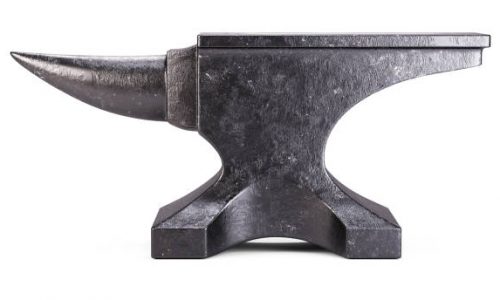Project Report For Anvil Manufacturing
Introduction
Project Report for Anvil Manufacturing is as follows.
A big block of metal (often forged or cast steel) having a flat top surface that is used as a striking surface (or “worked”) for another item is known as an anvil. Anvils are as big as they can be because the more inertia they have, the better they are in transferring the force of the striking tools to the work piece. Typically, the anvil is employed as a forging tool. It was the major tool of metal craftsmen prior to the development of current welding technologies.
The vast majority of modern anvils are constructed of cast steel that has been heat-treated with either a flame or an electric induction. Cast iron and low-quality steel have been used to make inexpensive anvils, but they are deemed inappropriate for serious usage since they distort and lack rebound when hit.
The face is the principal work surface of the anvil. For the most part, it is constructed of hardened steel and should be flat and smooth with rounded corners. Any facial markings will be transferred to the work. Sharp edges also tend to cut into the metal being worked, causing fractures to develop in the workpiece. The anvil face is hardened and tempered to withstand strikes from the smith’s hammer, so it does not distort with time.
The amount of force wasted in each hammer strike is likewise reduced by a firm anvil face. Never strike the anvil face with full force with hammers, tools, or workpieces made of hardened steel as this might result in chipping or deformation.

Uses of Anvil Manufacturing
- The Horn: The horn is a curved component that sits in front of the anvil. This component allows the blacksmith to pound the metal and shape it. The metal object may be perfectly shaped depending on how and what horn section they hold the thing on during hammering.
- The Face: The main and largest component of an anvil tool set is the face where the item is hammered. It has rounded edges to prevent it from cutting the item that is being hammered. The horn and the step are both held by the face.
- Pritchel’s Hole: The anvil has a tiny, round hole on it called a pritchel hole. The pritchel hole, like the hardy hole, is used to assist in punching holes through the metal that is being forged. If you want to get the greatest blacksmith anvil for your profession, you need to know about each aspect of an anvil so you can utilize it more efficiently.
Project Report Sample on
Anvil Manufacturing
Get Completely Custom Bankable Project Report
Market Potential Of Anvil Manufacturing
During the forecast period, the hand tools market is expected to grow at a CAGR of 5.8%. The market is expected to generate US$ 15.9 billion in revenue in 2023, with a value of US$ 27.9 billion by 2033.
Machine tools are used for a variety of operations such as cutting, shaping, drilling, grinding, and abrading. These tools increase product homogeneity while decreasing the requirement for manual effort. On the Indian market today, a wide range of machine tools, from little workbench mounted devices to massive machines utilised in the automotive, aerospace, and electronics sectors, are available.
Manufacturers have recognised the significance of tool design manipulations, advancements, and the inclusion of new features on a regular basis. Today’s tools must be sturdy, deliver consistent performance, and be built to meet the needs of the job for which they are chosen.
The large labour force and people working in fields that use hand tools, East Asia and South Asia Pacific are the market’s largest shareholders. Furthermore, Europe controls a sizable portion of the global hand tool market. By the end of 2033, Asia Pacific is expected to have a collective revenue share of 35% of the global market.

